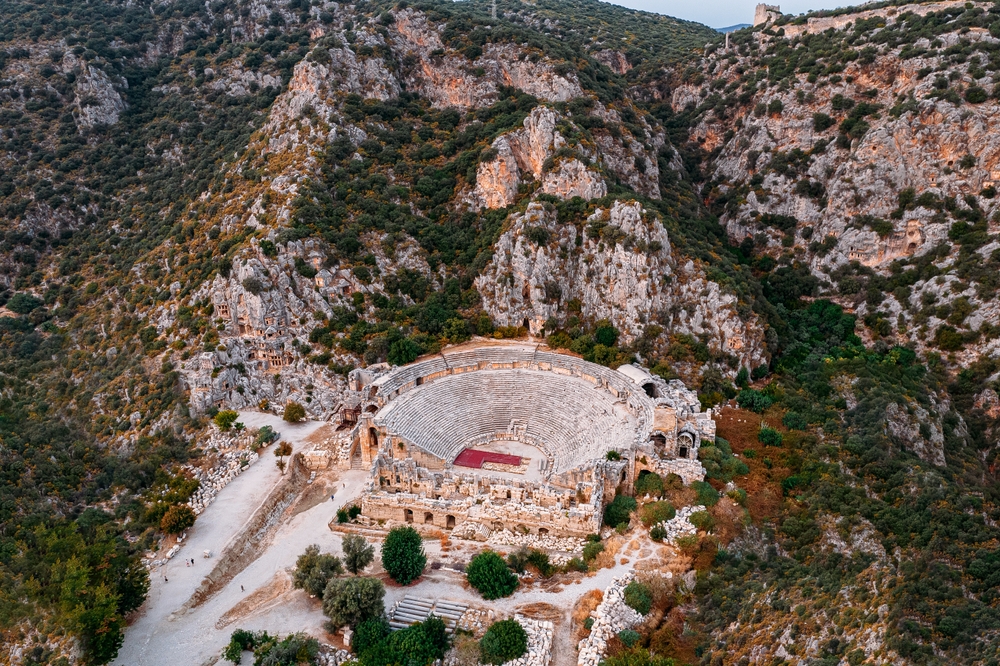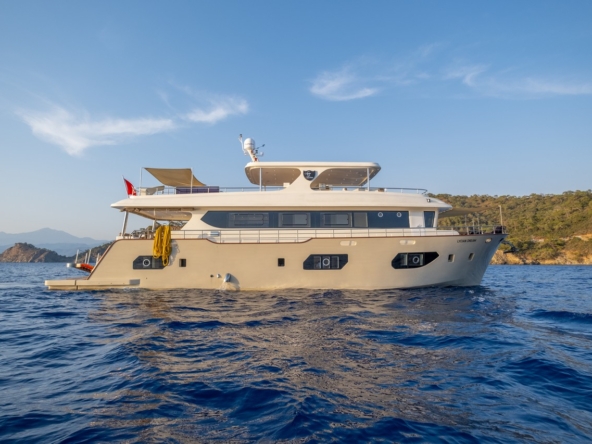Myra Ancient City Guide: History, Legend & Blue Cruise Adventures
Nestled in the heart of Demre on Turkey’s Mediterranean coast, Myra is one of the most remarkable ancient Lycian cities.
Famed for its monumental rock-cut tombs, the impressive Roman theatre, and the legendary Church of St. Nicholas, Myra blends history, myth, and natural beauty in a way few destinations can.
Visitors can explore Myra both by land and as part of a luxurious Blue Cruise, making the journey along Turkey’s Turquoise Coast truly unforgettable.
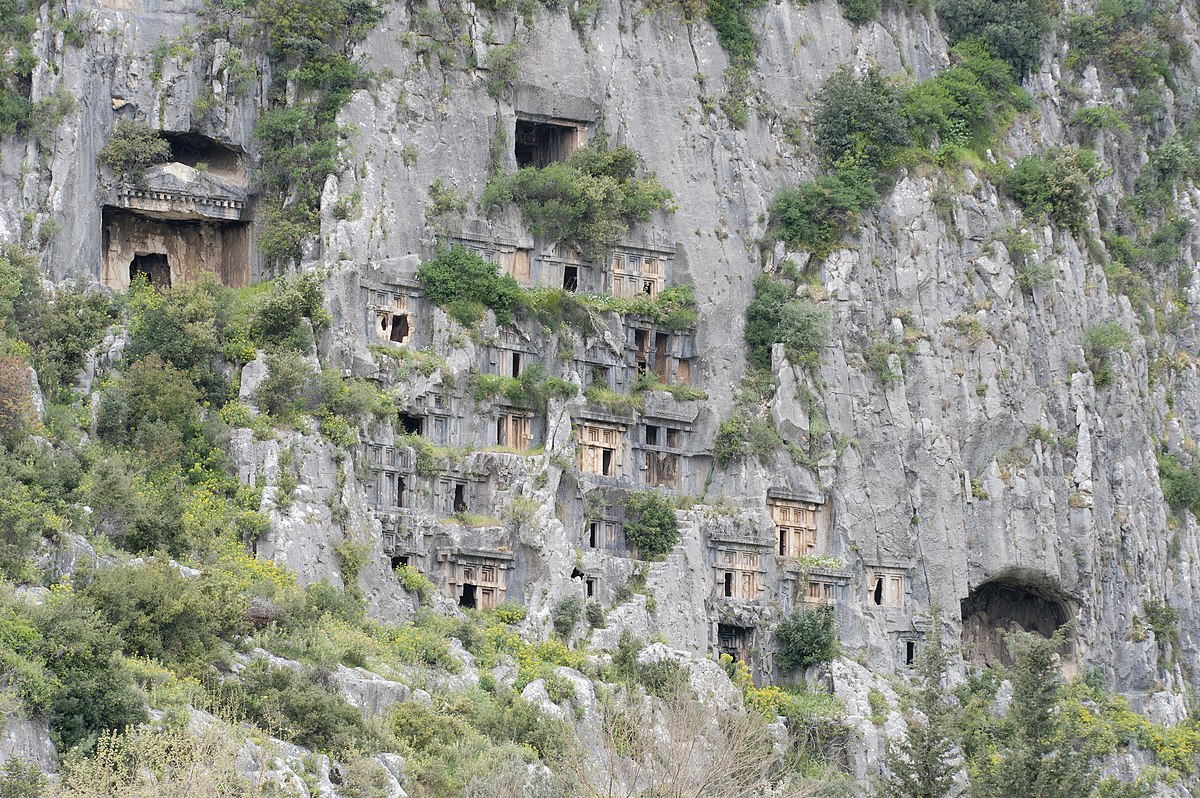
Myra is one of Lycia’s key historical and archaeological jewels. The cliffside rock-cut tombs testify to the city’s ancient cultural sophistication, while the Roman theatre demonstrates the grandeur of public life in antiquity.
Today, tourists can experience the fusion of Lycian, Roman, and Byzantine heritage. Those seeking a complete experience often combine Myra’s historical exploration with a gulet charter or yacht charter along the coast.
From the dramatic cliffs overlooking the city to the nearby Andriake harbor, Myra offers a rare glimpse into the past, while the turquoise waters of the Mediterranean provide a stunning natural backdrop.
The History of Myra
The origins of Myra trace back to the ancient Lycian civilization, which thrived in southwestern Anatolia during the second millennium BCE.
Lycia consisted of autonomous city-states united in the Lycian League, and Myra stood out as one of the principal cities in the region.
Its location near the fertile Demre plain and the Andriake harbor made it a hub for trade, agriculture, and culture.
Lycia and the Rise of Myra
The Lycians were renowned for their independence, unique language, and remarkable funerary traditions.
The city’s cliffside rock tombs feature intricately carved facades and inscriptions that reflect the Lycian belief in an afterlife and the importance of family lineage.
Archaeological evidence shows that Myra participated actively in the Lycian League and maintained strong connections with neighboring cities like Patara, Xanthos, and Pinara.
Myra under Roman Rule
When Lycia became part of the Roman Empire in 43 CE, Myra flourished as a regional capital.
The Romans developed extensive infrastructure, including roads, baths, temples, marketplaces, and the iconic Roman theatre.
The theatre, still remarkably preserved, could accommodate thousands of spectators and served as a center for civic and cultural life.
Trade flourished through Andriake harbor, which became a key Mediterranean port.
Roman warehouses, granaries, and storage facilities evidence Myra’s commercial importance. Visitors today can see remnants of these structures, imagining the bustling activity of merchants, sailors, and citizens centuries ago.
The Byzantine Era
Following the division of the Roman Empire, Myra entered the Byzantine period.
During this era, Christianity became central to the city’s identity. Churches, monasteries, and religious structures flourished, with the Church of St. Nicholas becoming particularly significant.
St. Nicholas: Myra’s Legendary Saint
St. Nicholas, the 4th-century bishop of Myra, is celebrated worldwide as the inspiration for Santa Claus.
Born in nearby Patara, he became renowned for acts of charity, protection of children, and support for sailors. His legendary generosity, often delivered secretly, evolved into the modern tradition of gift-giving.
The Church of St. Nicholas in Demre is a prime example of Byzantine religious architecture, adorned with frescoes and mosaics that narrate the saint’s life.
Pilgrims from around the world visit to honor his legacy. While his remains were later relocated to Bari, Italy, the church remains a spiritual focal point for visitors.
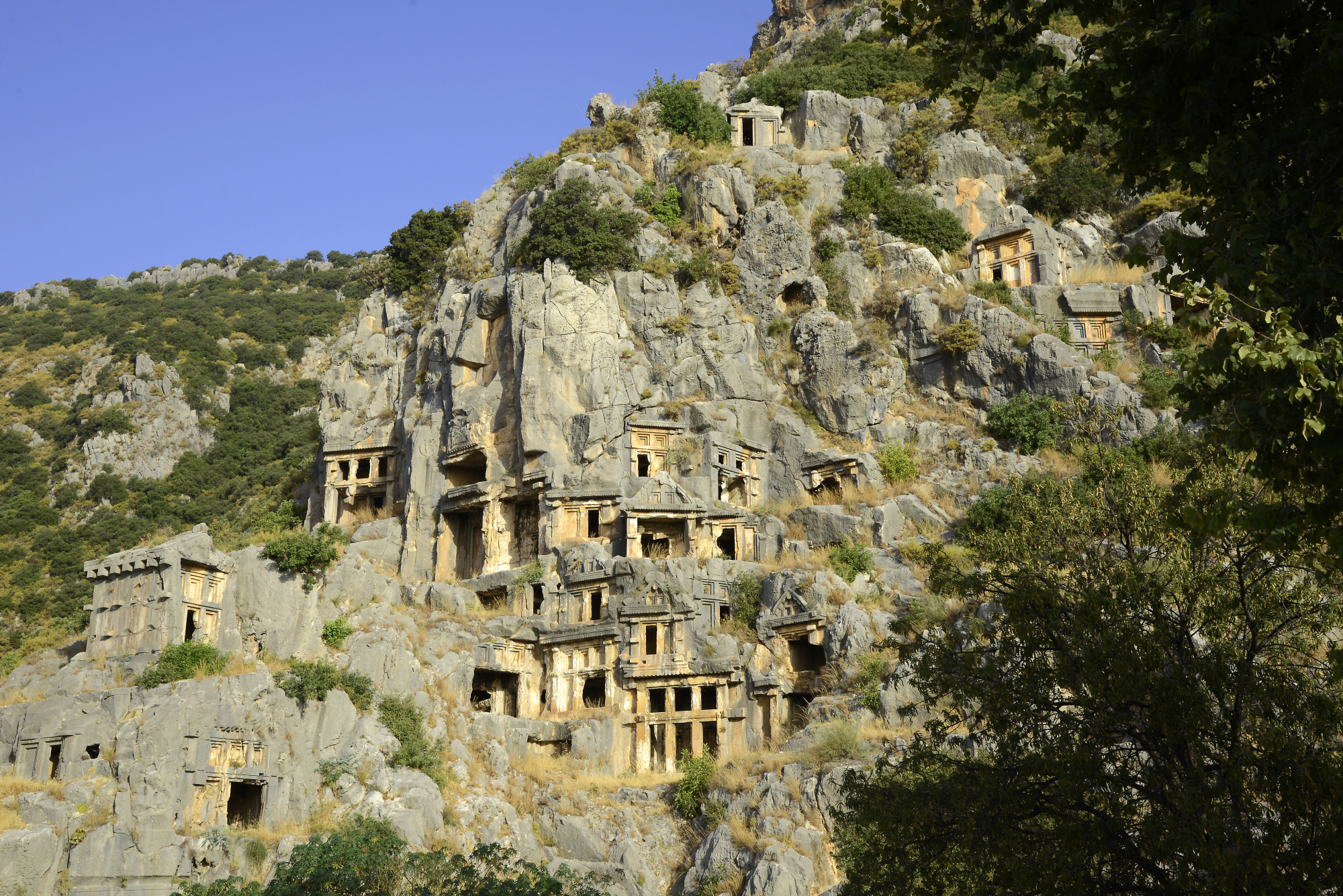
Architecture and Artistic Heritage of Myra
Myra’s architectural landscape presents a captivating mix of Lycian innovation and Roman engineering.
The rock-cut tombs, carved directly into limestone cliffs, resemble miniature temples or homes. Many feature elaborate reliefs of mythological scenes and depictions of daily life.
These tombs remain some of the most photographed and studied structures in Lycia.
The Roman theatre remains a focal point for visitors. Its semi-circular seating, stage buildings, and marble ornamentation illustrate the grandeur of public entertainment in antiquity.
Byzantine contributions, including churches and mosaic art, further highlight Myra’s artistic legacy.
Andriake Harbor: Gateway to the Mediterranean
Just a few kilometers from Myra lies Andriake Harbor, historically vital as the city’s maritime lifeline.
Here, Roman warehouses stored grains, olive oil, and wine, facilitating trade across the Mediterranean. The restored Granarium is part of the Museum of Lycian Civilizations and showcases ancient engineering.
Walking among the ancient docks and storage structures, visitors can imagine the daily life of Roman merchants and sailors.
The harbor area remains a scenic spot for Blue Cruise excursions, combining cultural heritage with natural beauty.
Natural Beauty Around Myra and Demre
Myra is set amid dramatic landscapes: fertile plains, mountain backdrops, and turquoise Mediterranean waters.
Nearby Kekova Island, known for its sunken ruins, offers crystal-clear waters that reveal submerged ancient walls, staircases, and harbor structures — a favorite spot for gulet charters and diving excursions.
Sailing along the Lycian coast from Fethiye to Demre, travelers can explore secluded bays ideal for swimming, snorkeling, and relaxation.
The combination of ancient ruins, pristine nature, and peaceful anchorages makes this area a jewel of the Mediterranean.
Experiencing Myra on a Blue Cruise
Visiting Myra is often part of a broader Blue Cruise experience.
Luxury yachts depart from ports such as Bodrum, Göcek, Marmaris, and Fethiye, exploring the Lycian coastline.
Platin Yachting offers an extensive range of gulets, yachts, and trawlers, from standard to ultra-luxury models.
Guests enjoy onboard dining, sunbathing, swimming, and exploring remote coves. The journey is enriched by the history of Myra and other Lycian cities along the route.
Gulet & Yacht Charter Options
- Luxury Gulet Charter – for an opulent sailing experience with modern amenities.
- Deluxe Gulet Charter – elegant interiors and personalized service.
- Ultra Luxury Gulet – top-of-the-line vessels with VIP comfort.
- Private Gulet Charter – exclusive itineraries for families or groups.
- Yoga Gulet Charter – wellness-focused sailing trips.
- Turkey Yacht Charter – explore pricing and options for sailing yachts along the coast.
- Bodrum Yacht Charter, Göcek Yacht Charter, Fethiye Yacht Charter – local departure points.
Visitor Information & Travel Tips
- Opening Hours: 8:00 AM – 7:00 PM during summer; Myra is accessible year-round.
- Entrance Fee: Museum Pass accepted; updated info available on Platin Yachting Contact.
- Getting There: By land from Demre or by sea via Andriake harbor.
- What to Bring: Sun protection, water, comfortable shoes, and a camera.
- Best Time to Visit: May to October for warm weather and calm seas.
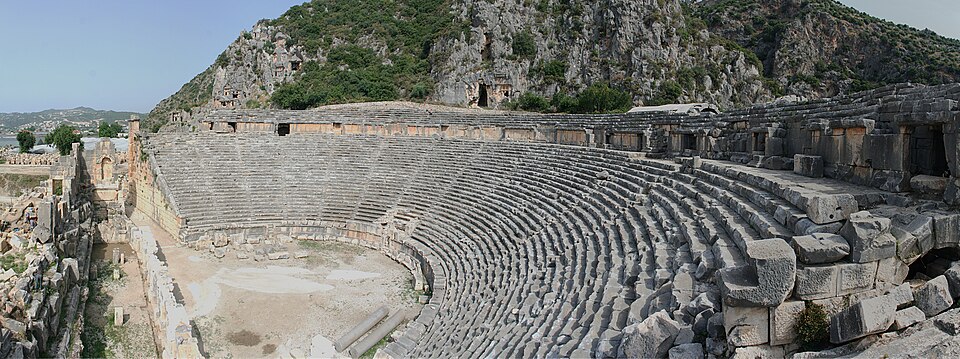
Myra — A Timeless Mediterranean Treasure
Myra offers a bridge between the ancient and modern worlds. Its rock tombs, Roman theatre, and the Church of St. Nicholas allow visitors to experience centuries of history in one location.
A Blue Cruise with Platin Yachting enhances this journey, combining luxury sailing with cultural discovery.
Whether aboard a gulet or a yacht, travelers can enjoy secluded bays, turquoise waters, and the timeless beauty of the Lycian coast.
Exploring Myra is not just a trip through history — it is an immersive experience connecting nature, legend, and luxury.

